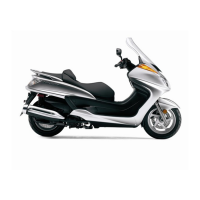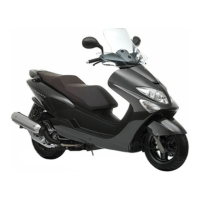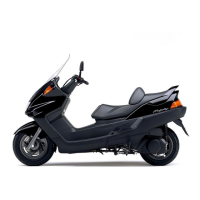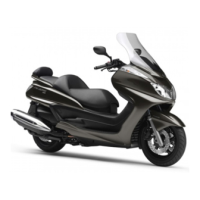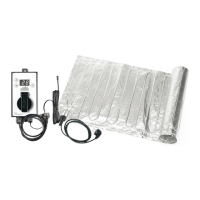Do you have a question about the Yamaha MAJESTY YP250 and is the answer not in the manual?
Key points for safe scooter operation, including signaling, braking, and road hazards.
Identification of parts and components on the left side of the scooter.
Identification of parts and components on the right side of the scooter.
Overview of the scooter's dashboard controls, levers, and instruments.
Operation of the main switch and steering lock positions (ON, OFF, LOCK, P).
Explanation of various indicator lights on the instrument panel.
Function of the speedometer and its self-test procedure.
How to read the fuel gauge and fuel tank capacity information.
Reading the coolant temperature gauge and precautions for overheating.
Features of the multi-function display including tripmeters, odometer, clock, etc.
Operation of the pass, dimmer, turn signal, and horn switches.
Location and operation of the front brake lever.
Location and operation of the rear brake lever.
Procedure for opening and closing the fuel tank cap.
How to open and close the rider seat.
Accessing and using the front and rear storage compartments.
How to adjust the rear shock absorber spring preload for ride comfort.
Location and operation of the sidestand and its safety function.
Essential checks before riding, covering fuel, oil, brakes, tires, etc.
Steps and safety precautions for starting the scooter's engine.
Procedures and tips for safely starting the scooter from a standstill.
Proper techniques for applying front and rear brakes, especially on wet surfaces.
Guidelines for the initial 1,600 km of operation to ensure engine longevity.
Location and purpose of the owner's tool kit for basic maintenance.
Schedule for regular inspections, adjustments, and lubrication of scooter components.
How to inspect the spark plug for condition and proper gap.
Procedure for checking engine oil level and changing engine oil.
Checking the coolant level in the reservoir and adding coolant if necessary.
Checking tire pressure, condition, and tread depth before each ride.
How to adjust the free play of the front and rear brake levers for optimal response.
How to check brake fluid levels and identify potential issues.
Procedure for replacing blown fuses and identifying fuse specifications.
Step-by-step guide for replacing a burnt-out headlight bulb.
Recommended procedures for cleaning and maintaining the scooter's appearance.
Instructions for short-term and long-term storage to protect the scooter.
Detailed technical specifications of the YP250 scooter.
Table for converting metric units to imperial units used in the manual.
Location and importance of key identification numbers for registration and parts.
Location of the model label for obtaining vehicle information.
| Engine Type | Liquid-cooled, 4-stroke, SOHC, 4-valve |
|---|---|
| Displacement | 249cc |
| Compression Ratio | 10.5:1 |
| Fuel System | Fuel Injection |
| Ignition | TCI |
| Transmission | V-Belt Automatic |
| Front Suspension | Telescopic fork |
| Rear Suspension | Unit Swing |
| Bore x Stroke | 69.0 mm x 66.8 mm |
| Front Brake | Single disc |
| Rear Brake | Single disc |
| Fuel Capacity | 12 liters (3.2 US gal) |

